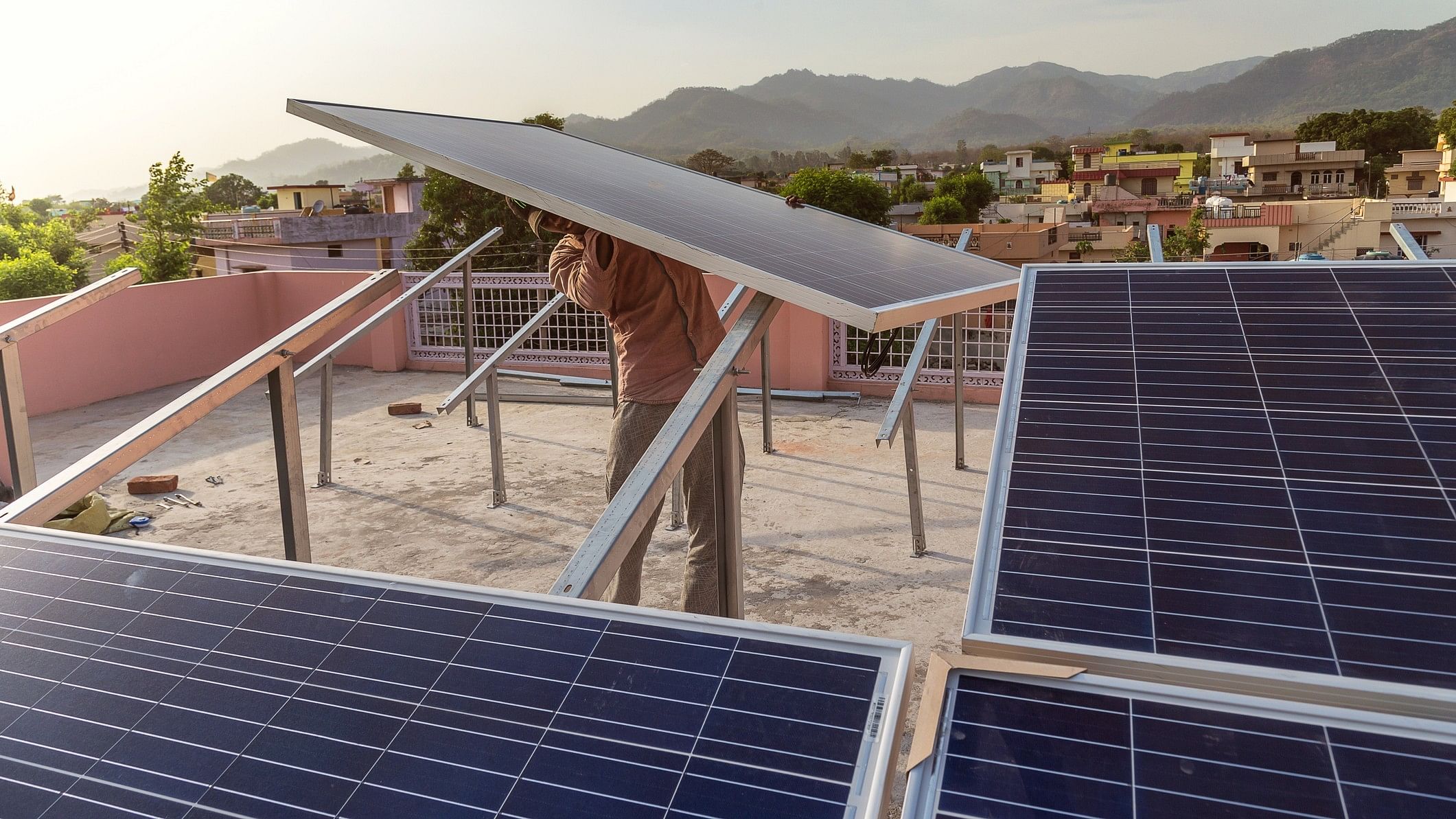
The biggest achievement of this pilot project would be the large volume of people becoming aware of rooftop solar capacity.
Credit: iStock Photo
On January 22, Prime Minister Narendra Modi announced the Pradhan Mantri Suryodaya Yojana where 10 million residential households would be provided up to 300 units of free electricity for setting up solar panels on their rooftops. On February 1, in her Interim Budget, Finance Minister Nirmala Sitharaman announced that State-owned REC Ltd was made the conduit for the Rs 10,000 crore fund disbursal. On February 13, details of the Rs 75,000 crore PM Surya Ghar Muft Bijli Yojana was announced.
Details have been coming out thick and fast. The Ministry of Power and REC have worked out the details of how the funds would be disbursed to the Central Power Sector Enterprises (CPSEs) in every state for further funding of vendors and, eventually, consumers. Currently, the eight CPSEs are being trained in the states. The CPSEs are given the upfront subsidy, and low-cost loans for the remaining amount are being organised through banks and other lending agencies, facilitated by the vendors.
Manpower Challenges: The 40 GW capacity by 2026 is merely the first step. In addition, commercial buildings, all Union and state government-owned buildings and defence assets would also generate solar power. But for V K Singh, Director Projects, REC, the bigger challenge is to ensure that training the CPSEs, vendors, and foot soldiers from among ITI pass-outs or even final-year students is completed on time. Skilling 800-1,000 students free of cost for two-three days at the training facility in Hyderabad regularly is a challenge. Rajkot, Benares, and Ayodhya projects need employees who will function as installers within days, if not weeks, and the REC and trainers are working overtime identifying, skilling, and recruiting these candidates.
Advantages: With many more decentralised units active, the amount of power in the grid increases, and the system is progressively decarbonised. Also, as the electricity thus generated travels smaller distances, its efficiency increases too. The biggest achievement of this pilot project would be the large volume of people becoming aware of rooftop solar capacity.
In November, the Council on Energy, Environment and Water (CEEW) came out with a whitepaper on the potential of residential solar rooftops in India. Accounting for almost 40 per cent of the country’s carbon emissions, reducing these would help India reach the 2070 decarbonising emissions faster.
According to these estimates, ~70 per cent consumers utilise less than 100 KWh per month. Since they receive subsidised power, distributing to them is a loss-making enterprise to the distributing companies (discoms). If they can be converted to generators, the power would be consumed at source. In many instances, they could be worked into community solar models where bulk generation affords even and cost-effective power to many consumers without drawing upon the resources of the discom. This is already taking place in Bihar and Meghalaya at scale, and is being studied.
The CEEW estimates that over 250 million households have the potential to generate over 637 GW solar energy from rooftops. With the ability to generate and the 300 units as a sop too, the interest among consumers is a positive fall-out. The CEEW study found that knowledge about rooftop solar (RTF) in 2020 was 50 per cent nationally with only 5 per cent residents willing to set up RTF. Incentivised schemes will raise both awareness and willingness.
This is likely to bring many entrepreneurs forward to assemble, manufacture, and source technology transfer at cost-effective rates. There is a case for funding research into these frontier technologies and even incentivising educational institutions to collaborate with industry.
Poised with its inherent advantages of high-intensity solar and wind energies, India is in the best position. It has picked up the baton and started running. But the partner agencies of discoms, power authorities, engineers, and ground staff as well as the metering industry is way off the mark as far as efficiency or willingness goes. Unless those problems are fixed, the challenges will remain.
(E Jayashree Kurup is a writer-researcher in real estate, and Director, Real Estate & Cities, Wordmeister Editorial Services. Views are personal.)
Disclaimer: The views expressed above are the author's own. They do not necessarily reflect the views of DH.
